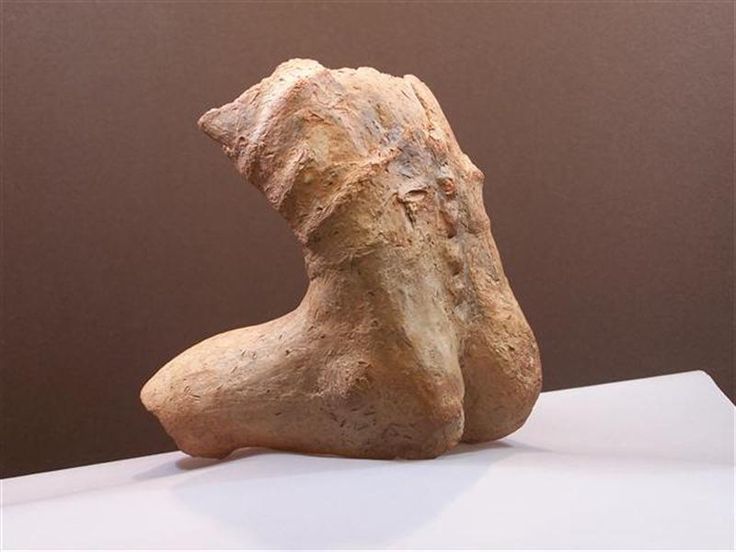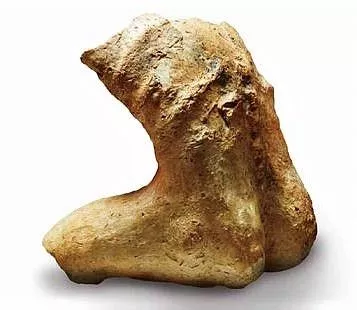The ‘Adam of Macedonia’, discovered in 2000 at the Cerje-Govrlevo archaeological site in the Republic of Macedonia, is a remarkable terracotta figurine dating back to around 5500 BCE. This stunning artifact represents a male body in a seated position, offering one of the most detailed and anatomically accurate depictions from prehistoric times. Unlike most early artistic works, which often focus on symbolic or abstract representations, the ‘Adam of Macedonia’ stands out for its realism and anatomical precision.
Anatomical Detail and Significance
The figurine displays extraordinary attention to detail, including visible muscles, ribs, and even a broken phallus. The seated male figure seems to capture a moment of intense physical exertion or a breath, with its abdomen showing signs of discomfort and the spine tensed. This rare level of anatomical accuracy provides a glimpse into the sophistication of early artists and their understanding of the human form.

What sets this figure apart is its unusual realism in an era where depictions were generally more stylized, such as the Mother-Goddess figures that were common during the Neolithic period. While the Mother-Goddess represented fertility and maternal power, ‘Adam of Macedonia’ shifts the focus to the male form, offering a rare example of male representation in ancient art. The breakage of the phallus suggests the figurine could be an expression of vulnerability or human fragility, which was uncharacteristic for typical representations of masculinity during this time.
A Representation of Human Life
The intricacy of the ‘Adam of Macedonia’ may also suggest that it was not merely a decorative object but possibly had ritualistic or symbolic significance. Some experts believe that such figurines may have been used for fertility rites, representations of masculinity, or other cultural practices. The highly detailed and realistic portrayal could also indicate that the figurine had a specific role in the community’s spiritual or daily life, reflecting a deeper understanding of the body and its connection to larger societal values.

The figurine’s expression of physical strain, coupled with the meticulous rendering of the body’s features, reveals a sophisticated understanding of human anatomy and the physical state. It may even suggest that the early artists intended to convey more than just form, but a deeper connection to the human experience, such as survival, struggle, or spiritual meaning.
An Unusual Find in Prehistoric Art
In a time when the world saw the proliferation of Mother-Goddess statues, which emphasized fertility and femininity, the ‘Adam of Macedonia’ challenges the conventions of its era by offering a rare and more realistic depiction of the male form. Its existence suggests that the artists of the time were exploring a broader range of human experiences, including representations of masculinity, and were capable of producing art with a high degree of anatomical realism.

This figurine is not only a testament to the artistic sophistication of early civilizations but also a window into their cultural and spiritual lives. It provides valuable insight into the nuanced views of the human body and its symbolic role in the early Neolithic world. The depiction of male anatomy in such an intricate and realistic manner could suggest the early exploration of gender roles, power dynamics, and societal structure in Neolithic communities.
Conclusion
Today, the ‘Adam of Macedonia’ stands as one of the most important archaeological finds from the Neolithic period, offering a rare glimpse into the physical and cultural life of ancient humans. Its combination of realistic artistry and cultural significance makes it an invaluable piece of history, and its place among other prehistoric discoveries continues to provoke discussion among scholars and enthusiasts alike. The ‘Adam of Macedonia’ represents not just an artistic achievement but also a reflection of the evolving social, spiritual, and intellectual landscapes of early human societies.
As one of the rare examples of male representation in Neolithic art, it challenges established norms and offers new interpretations of ancient human culture. The ‘Adam of Macedonia’ provides modern-day researchers and historians with an invaluable opportunity to reimagine prehistoric societies, their values, and the complex dynamics that shaped them. Through this figurine, we see not just an artistic endeavor but a deep and thoughtful exploration of humanity’s past.

